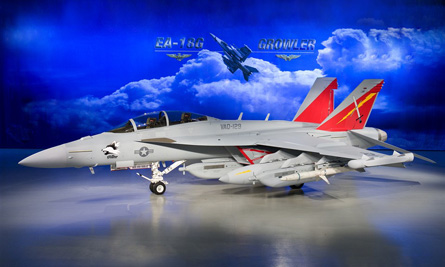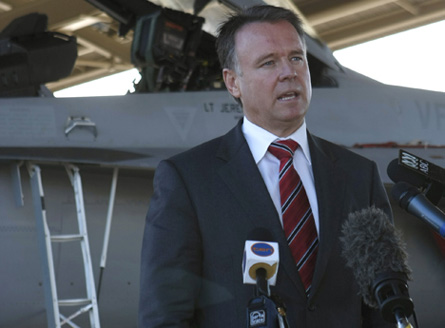Australia has decided that 12 of the 24 Boeing F/A-18F Super Hornets it has ordered will be wired for electronic attack capabilities while they are still on the production line, allowing it to upgrade the aircraft to the US Navy's E/A-18G Growler configuration at a later date if it wishes to.
“Wiring 12 of the Super Hornets as Growlers will give us the opportunity to provide taxpayers with better value for money,” says defence minister Joel Fitzgibbon. “If finally pursued, the relatively small investment will significantly enhance the Super Hornet’s capability by giving electronic attack capacity and therefore the ability to nullify the systems of opposing aircraft.”
 |
|---|
© Boeing |
The wiring will add A$35 million ($23 million) to the A$6.6 billion that Canberra agreed to pay for 24 Super Hornets in early 2007. If all 12 aircraft were eventually converted into Growlers, it would cost an additional A$300 million. A final decision will not be required until around 2012, says the defence ministry.
The E/A-18G remains in operational test for the USN, but initial operational capability is expected shortly. The Growler is essentially an F/A-18E/F fitted with ITT ALQ-99 radar jamming pods and an interference cancellation system, Northrop Grumman ALQ-218(V)2 radio frequency receiver and Raytheon ALQ-227 communication countermeasures suite for electronic surveillance.
The modifications will give Australia the option to “significantly enhance” its aircraft, Fitzgibbon says. “It will also provide the Super Hornets with counter-terrorism capability through the ability to shut down the ground-based communications and bomb triggering devices of terrorists,” he adds.
Fitzgibbon meanwhile criticised the previous Australian Government that made the original order for not considering Growlers initially. John Howard's administration, which placed the order after deciding to retire Canberra's General Dynamics F-111 fleet and to provide a stop-gap ahead of the delivery of the Lockheed Martin F-35 Joint Strike Fighter, lost the 2007 general elections.
“It was apparent that the Howard government didn’t properly anticipate the need to retire the F-111 in 2010,” says Fitzgibbon (below). “If they had taken a more prudent approach in making the Super Hornet decision rather than rushing to fill their impending air combat capability gap, they may have realised that this was a more effective approach to take.”
 |
|---|
© Australian Department of Defence |
Boeing is also considering a so-called “Growler lite” export version of the E/A-18G, which can be delivered without the radar jamming pods and interference cancellation system. The initiative targets international customers who are keener on the aircraft’s enhanced awareness capabilities than the Growler’s electronic attack aspects. Australia, Brazil, India and Japan are some of the potential customers for the Super Hornet and the Growler.
Source: FlightGlobal.com























